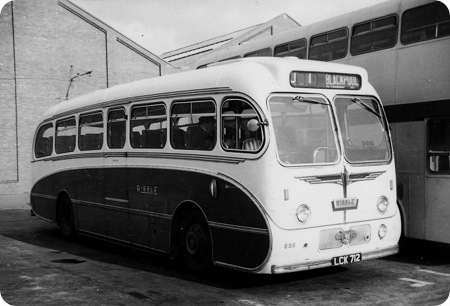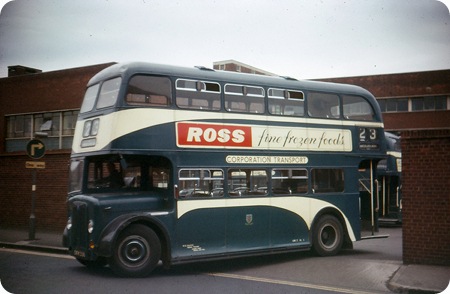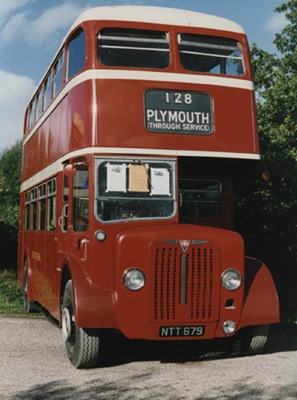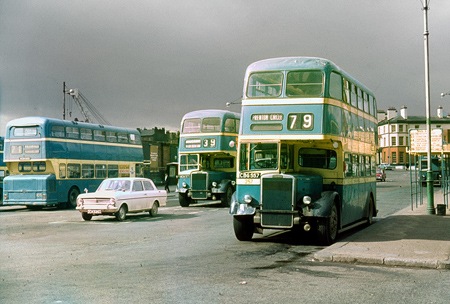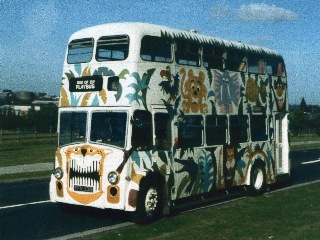Ribble – Leyland Tiger Cub PSUC1/2 – LCK 712 – 998
Ribble Motor Services
1958
Leyland Tiger Cub
Burlingham ‘Seagull’ Mk 3 C41F
We are travelling in style today on a rather nice coach or as when I was a young lad I would always say “are we going on a chara” more than likely originates from charabanc. The Yorkshire dialect as a tendency to shorten words and does not use a new word if the old one will suffice. Did you have a word other than coach for coach, and whilst we are at it, have you a different word for a bus, I had a friend from Oldham Lancashire who called a bus a ‘buzz’, let me know along with your area, leave a comment.
Anyway that’s enough of that back to the Ribble, the ‘Seagull’ body was very popular for the period not surprising really they did look rather sleek at the time. Ribble also had the Mk 2 version of the ‘Seagull’ built 1953/4 but they had centre entrances. I have a photo of a 1957 Yorkshire Traction ‘Seagull’ I think it is a Mk 2.
An uncle of mine, a native of St Helens, always referred to a coach as a SALOON.
Pete Davies
Which was correct as the replacement for the charabanc was the Saloon – or all weather – Coach.
David Oldfield
The bodywork on this is actually of the Mk. 6 version of the Seagull, easily distinguished by the side glazing which is set in "window pans" after the fashion of Burlingham’s service bus body of the time. Very few of this design were built apart from the Ribble batch, but Harper Bros of Heath Hayes had some on Guy Arab LUF chassis. One of these at least is preserved. I have just written an article on the various breeds of Seagull which I will be sending to the website as soon as I can get round to typing it!
Neville Mercer
When working for Ribble at Carlisle depot in 1964 I was detailed to take over a Tiger Cub/Seagull identical to this one at Carlisle when it arrived from Manchester en route to Glasgow. With 4 speed (I think) gearbox and 2 speed axle they were lovely machines to drive even up the A 74 trunk road which was little better than a glorified country lane in those days. Although I remember well the large fleet of Austin 5 ton tippers belonging to a Carlisle scrap merchant hauling rock on the construction site when the section from Telford Bridge to Beattock Summit was being converted to dual lane.
Gerald Walker
29/01/12 – 07:25
Southdown buses and coaches were always referred to as cars for many years even into NBC days. I totally agree with Gerald Walker about the Tiger Cub with 4 speed box and 2 speed axle they had a lively performance and light controls and excellent brakes, the secret was to master the 2 speed axle and use it properly. Ours were fitted with Weymann Fanfare bodies which were solidly built and comfortable. I have to say light controls and brakes were not at that time a common trait with Leylands.
Diesel Dave
29/01/12 – 16:27
Saloons/Cars, as hangover’s from the past, bring to mind older conductors, even in the early 60’s, still saying, when the inside was full, "Plenty of room outside" from open-top days.
Chris Hebbron
29/06/13 – 15:20
I started my apprenticeship at Frenchwood body shop which we shared with the body builders in 1962 and worked on most bus numbers 1200s, 1300s, 1400s, 1500s, and 1600s with 1700s just about starting the overhaul on the bus bodys, one instance whist cleaning the boot of a seagull coach some one closed the doors, and with using cellulose thinners after 15 mins I was drunk as a lord, light headed and later, with a bad head, but I left in 1964 and went to Atkinson vehicles to finish my time, in the service department and was there for 12 years.
James Lynch
23/11/13 – 07:51
One of these worked out of Whiteleas for George Wimpey Contractor in the 60s and 70s, it was a former Ribble coach and had reg LCK ???
Frank Lowe
